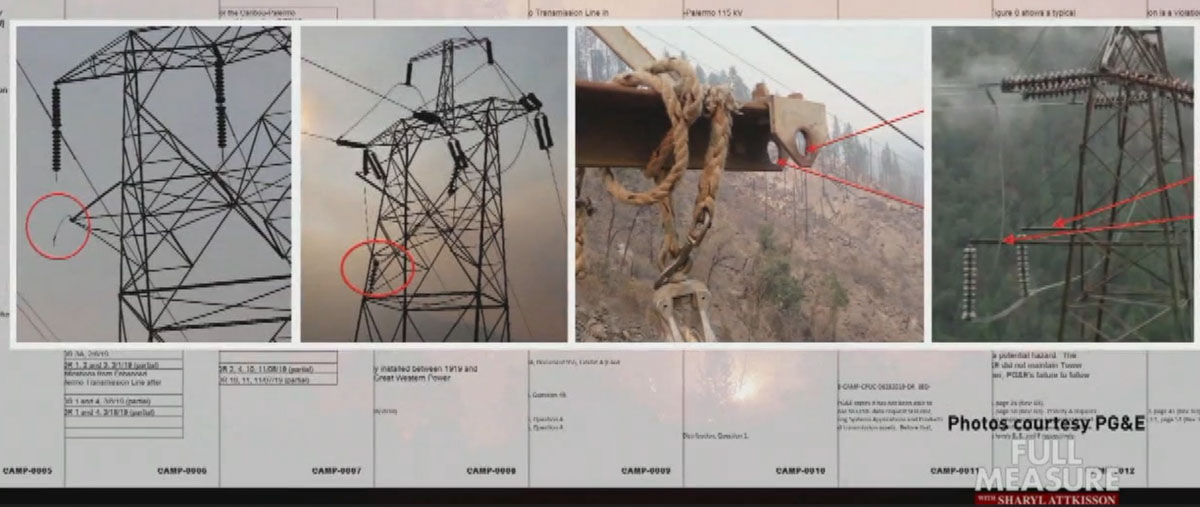
Investigative reporters from FULLMEASURE looked at how the preemptive electricity blackouts occurred in California and the effects on residents and businesses.
News and opinion about wildland fire
The effects on businesses and residents
Wildfires have the potential to become a concern at seven additional bases where it is not now a serious threat
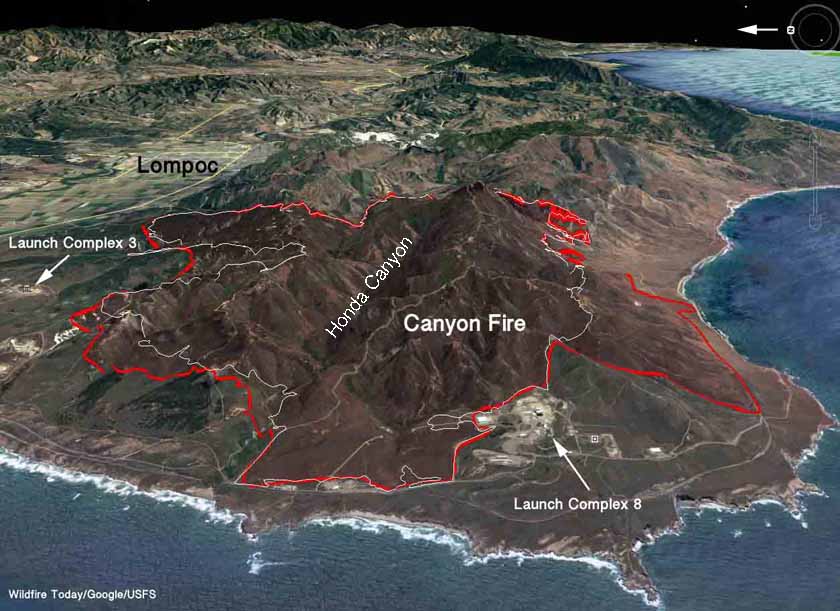
A report prepared by the Department of Defense in 2019 identified 36 bases where wildfire is currently a concern. Taking climate change into account that number is expected to grow to 43 over the next 20 years.
An analysis required by the National Defense Authorization Act for Fiscal Year 2018 studied 79 priority installations based on their operational role. The goal was to assess the significant vulnerabilities from climate-related events in order to identify high risks to mission effectiveness on installations and to operations.
The installations break down by organization as follows:

In addition to the predicted effects of climate change on wildfire potential, the report also considers recurrent flooding, drought, desertification, and the thawing of permafrost.
The installations that currently are not classified as vulnerable to wildfires but are expected to become so within 20 years are:
Of the 79 installations that were considered in the study, all that were predicted to develop a new vulnerability to wildfire are Naval Bases. Of the 21 Army bases only 4 are now described as vulnerable to wildfire and no others are identified as becoming vulnerable within 20 years.

One example of an Air Force Base that is currently vulnerable to wildfires is Vandenberg on the Southern California Coast. Two fires on the base come to mind:
If approved, the budget would also establish a Wildfire Forecast and Threat Intelligence Integration Center
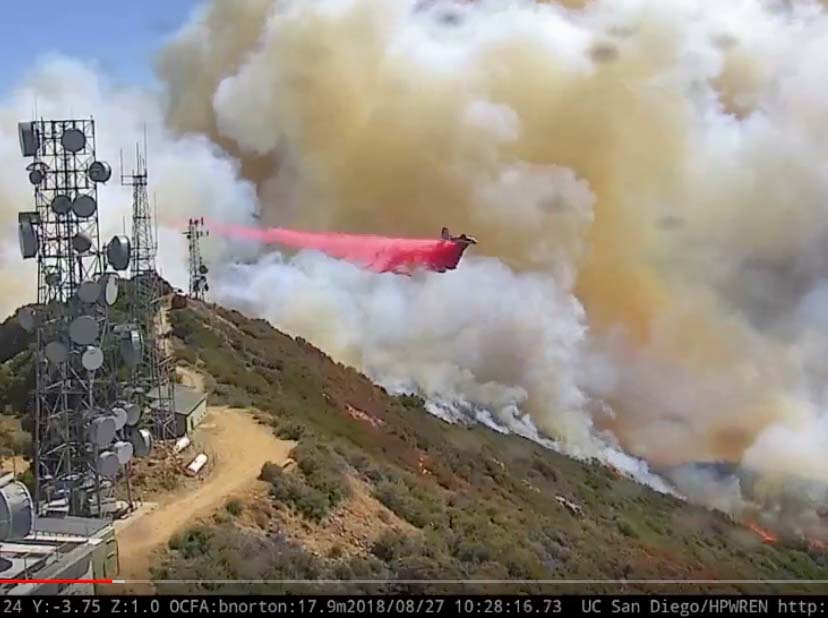
In his proposed $222 billion budget for the 2020-2021 fiscal year beginning July 1, California Gov. Gavin Newsom put forth several initiatives that if approved by the legislature could have a significant effect on wildland firefighting in the state. The budget refers to “the new normal fire conditions” and the need to mitigate long periods of fighting fires without respite.
Additional funding for the California Department of Forestry and Fire Protection (CAL FIRE) would include $120 million in 2020-2021 and $150 ongoing for each of the following four years. This would enable the creation of 677 more positions phased in over five years resulting in operational flexibility through peak fire season and beyond, based on fire conditions. These positions would:
The budget includes $9 million to establish a Wildfire Forecast and Threat Intelligence Integration Center staffed by 22 positions to identify current wildfire threats and improve situational awareness of conditions in real-time.
The proposed budget sets aside $100 million for CAL FIRE and OES to administer a home hardening pilot program, with a focus on homes located in low-income communities in areas of high fire risk. The program would also fund 26 positions for defensible space inspections.
The budget approved for the 2019-2020 fiscal year included funds to operate the HC-130H aircraft that will be converted to air tankers, continue the replacement of the 12 aging Bell Super Huey Helicopters with new Sikorsky S-70I Firehawks, and operate 100 additional fire detection cameras.
PG&E CEO says preemptive power shut offs during periods of high fire danger in California are likely to continue “for some period of time”

Today the U.S. Senate Committee on Energy and Natural Resources held a hearing to examine the impacts of wildfire on electric grid reliability, efforts to mitigate wildfire risk, and how to increase grid resiliency.
The five witnesses at the hearing were Bill Johnson (PG&E), Michael Wara (Stanford Woods Institute for the Environment), Scott Corwin (Northwest Public Power Association), Carl Imhoff (USFS Pacific Northwest National Laboratory), and Dr. B. Don Russell (Texas A&M).
The Senators and witnesses talked about Pacific Gas and Electric’s bankruptcy following the fires caused by their system, the future of preemptive power shutoffs during periods of high fire danger, and two new advances in technology that could help prevent some fires that are caused by power lines.
Dr. B. Don Russel, a professor at Texas A & M, told the committee about distribution fault anticipation technology developed at his university that uses intelligent algorithms to continually monitor electric circuits to detect the very earliest stages of failing devices and missed operations. The concept is simple, he said. You find and fix it before the catastrophic failure causes a fire or an outage. Dr. Russel repeatedly advocated the adoption of this system.
San Diego Gas and Electric’s research found that it takes 1.37 seconds for a broken conductor to hit the ground, for example, if a tree falls into the line or a vehicle hits a power pole. When the line contacts the ground sparks can ignite vegetation. The system is designed to detect a break and shut off the power before the clock hits 1.37 seconds — hopefully, avoiding what could become a dangerous wildfire.
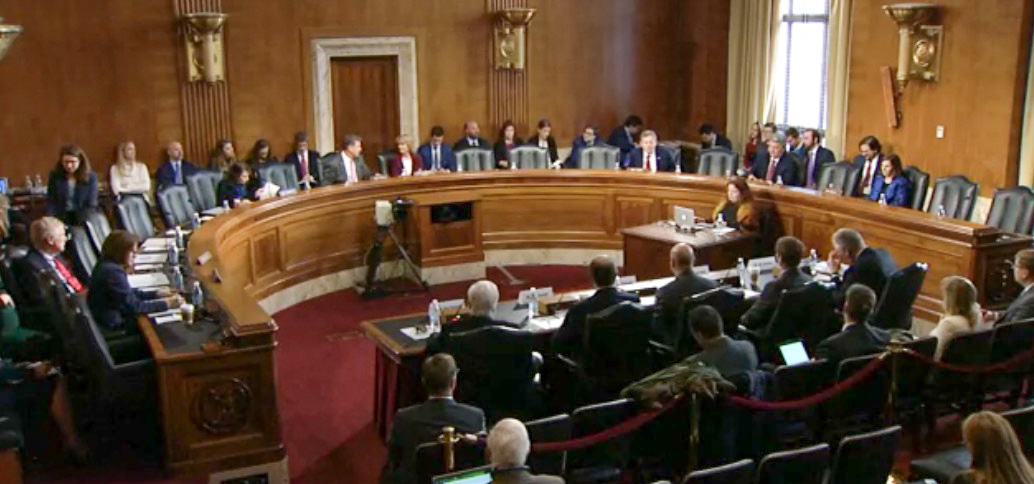
Bill Johnson became the CEO of Pacific Gas & Electric about 8 months ago about the time the company began going into bankruptcy. Senator Murkowski asked him how much longer residents in California would continue to be affected by the electricity being shut off during periods of high fire danger.
Mr. Johnson said San Diego Gas & Electric is still doing Public Safety Power Shutoffs (PSPS) in Southern California during periods of high fire danger 12 years after their power lines started multiple large fires in 2007, but the shutoffs are “surgical” and very localized. He said “[I]n Northern California it would take us probably five years to get to the point where we can largely eliminate this tool… So I think over the next couple of years you’ll see a progression of shorter, fewer PSPS events. But the climate change and the weather change is dramatic enough that I don’t think we will see the end of it for some period of time.”
Dr. Michael Wara discussed the effect of PSPS on residents:
The use of PSPSs has both prevented wildfire and caused widespread disruption to families and businesses, especially in Northern California. PSPS events, though they do dramatically improve safety, are likely very costly to the health of the economy, especially in smaller communities. My best estimate, using the Interruption Cost Estimator tool developed by Lawrence Berkeley Laboratory indicates that PG&E PSPS events in 2019 cost customers more than $10 billion – that’s 0.3% of gross state product or 10% of overall economic growth this year in California.
In October we wrote about the effects of PSPSs on California residents.
Below is an excerpt from Mr. Johnson’s prepared testimony about PG&E:
PG&E is deeply sorry for the role our equipment had in those fires and the losses that occurred because of them. And we’re taking action to prevent it ever happening again.
And today we’re taking that work a step further by increasing vegetation management in the high risk areas, incorporating analytical and predictive capabilities, and expanding the scope and intrusiveness of our inspection processes.
We deployed 600 weather stations and 130 high resolution cameras across our service areas to bolster situational awareness and emergency response. We’re using satellite data and modeling techniques to predict wildfire spread and behavior. And we’re hardening our system in those areas where the fire threat is highest by installing stronger and more resilient poles and covered line, as well as undergrounding.
And this year we took the unprecedented step of intentionally turning off the power for safety during a string of severe wind events where we saw up to 100 mile an hour winds on shore in Northern California. And this decision affected millions of our customers, caused them disruption and hardship even if it succeeded in protecting human life.
We are operating on all fronts to make the system safer and more resilient.
You can watch a video of the entire hearing. It is one hour and 35 minutes, not counting the wait for it to begin at 17:57.
Women-in-Fire Prescribed Fire Training Exchanges are supported by TNC, USFS, and DOI
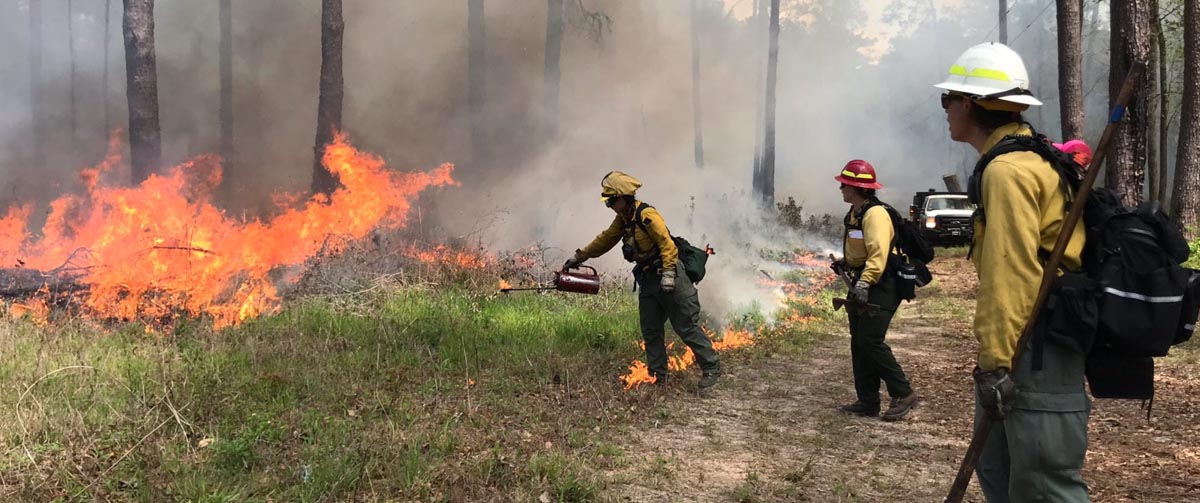
Women-in-Fire Prescribed Fire Training Exchanges (WTREX) holds 12-day training sessions to help women advance their formal qualifications in wildland fire management. The goal is to enhance their understanding of fire ecology, fire effects, communications, outreach, prescribed fire policy, and planning. At least three sessions have occurred, in Florida and California.
When the U.S. fire management system was conceived in the early 1900s, women’s roles in the workforce were much different than they are now. Even today, women constitute a relatively small proportion of the workforce, filling roughly 10 percent of wildland fire positions and only 7 in 100 leadership roles. In recent years, there has been an increased effort to recruit women into fire, yet social and cultural challenges remain. New recruits often find the dominant fire management system to be dismissive of female perspectives and strengths, even as its increasing complexity requires fresh approaches and insights.
More information about all types of Prescribed Fire Training Exchange events can be found at The Nature Conservancy and at the Prescribed Fire Training Exchange (TREX) Facebook page.
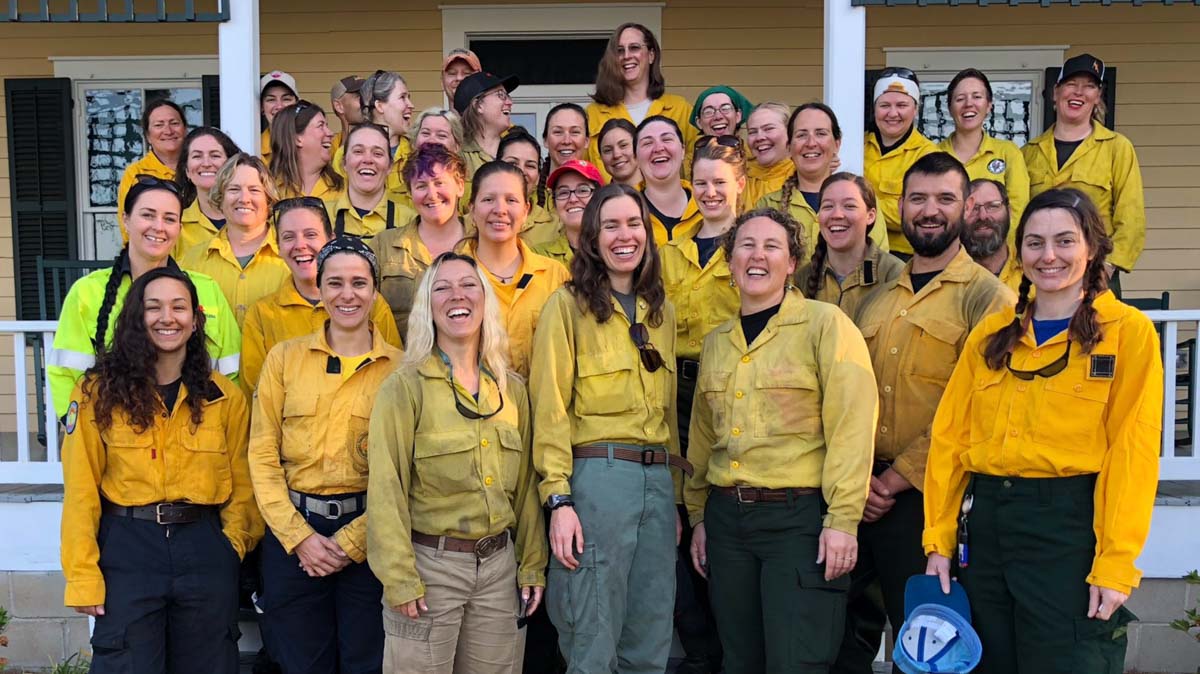
WTREX is supported by Promoting Ecosystem Resilience and Fire Adapted Communities Together, a cooperative agreement between The Nature Conservancy, USDA Forest Service, and agencies of the Department of the Interior.
Thanks and a tip of the hat go out to Paula. Typos or errors, report them HERE.
The invasive plant increases the fire hazard in urban and rural areas
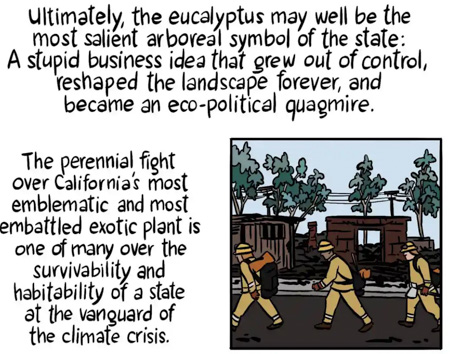
Many areas around the world have imported eucalyptus trees in order to harvest the wood, leaves, and oil in order to make paper and medicine. But wildfires burn rapidly under the trees and through the crowns, fed by the stringy bark, oil, and the leaves and forest litter on the ground that do not decompose.
In California they have also been imported and planted for esthetic purposes. But this invasive species brought many problems with it.
The Guardian has a unique illustrated story about this controversial plant. Check it out here.
Articles on Wildfire Today tagged “eucalyptus“.